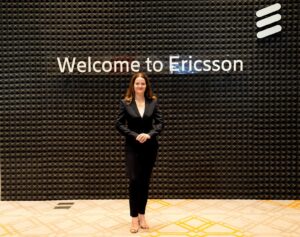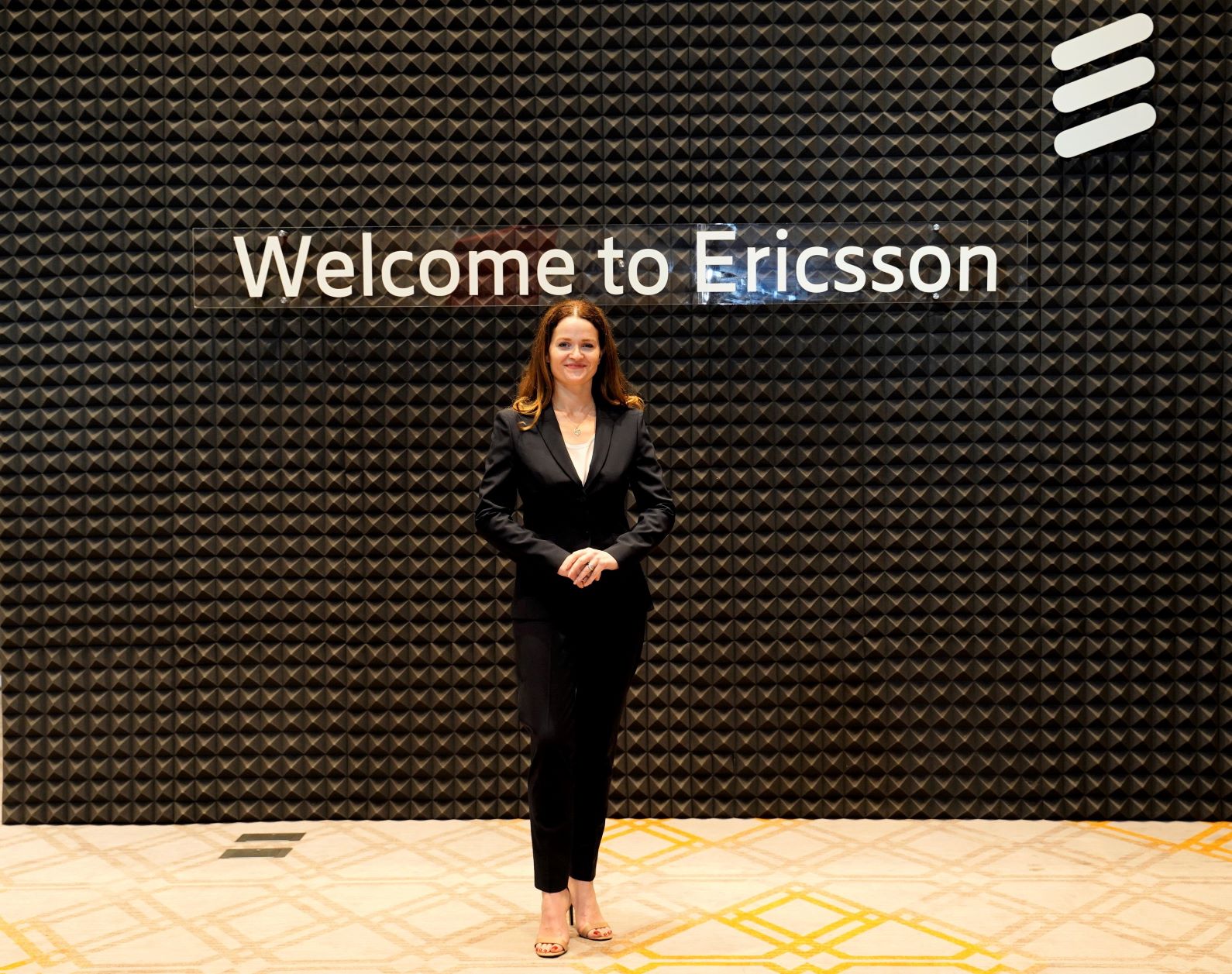- ภายในสิ้นปีนี้ จะมีจำนวนผู้สมัครใช้ 5G ทั่วโลก เพิ่มเป็น 220 ล้านราย
- ปี 2569 ภูมิภาคเอเชียตะวันออกเฉียงใต้และโอเชียเนียจะมีผู้ใช้ 5G เพิ่มขึ้นเป็น 380 ล้านราย หรือคิดเป็น 32% ของจำนวนผู้ใช้มือถือทั้งหมด
- ผู้ให้บริการด้านการสื่อสารในภูมิภาคเอเชียตะวันออกเฉียงใต้ โอเชียเนีย และอินเดีย จะมีรายได้จากการให้บริการ 5G แก่ผู้บริโภค รวมกันถึง 297 พันล้านดอลลาห์สหรัฐฯ ในปี 2573
อีริคสัน (NASDAQ: ERIC) เผยรายงาน Ericsson Mobility Report ฉบับล่าสุด ระบุว่าสี่ในสิบของจำนวนผู้ใช้มือถือในปี 2569 จะใช้ระบบเครือข่าย 5G เป็นหลัก จากปัจจุบันที่มีผู้สมัครใช้ 5G และเครือข่ายมีสัญญาณครอบคลุมมากขึ้น ตอกย้ำให้เห็นว่าเทคโนโลยี 5G คือ ปัจจัยสำคัญเชื่อมต่ออุปกรณ์มือถือที่ให้ความรวดเร็วที่สุด ตามรายงานยังระบุว่าภายในสิ้นปีนี้จะมีจำนวนผู้คนทั่วโลกมากกว่า 1 พันล้านรายอยู่ในพื้นที่ที่เครือข่าย 5G ครอบคลุม หรือคิดเป็น 15% ของจำนวนประชากรทั่วโลก และจะมีผู้ใช้ 5G ทั่วโลกเพิ่มขึ้นเป็น 220 ล้านราย
ในปี 2569 คาดว่า 60% ของประชากรทั่วโลกจะสามารถเข้าถึงระบบเครือข่าย 5G โดยมีผู้ใช้ 5G สูงถึง 3.5 พันล้านราย และมีปริมาณดาต้าอินเตอร์เน็ต 5G เกินกว่า 50 เปอร์เซ็นต์ของปริมาณดาต้าทั้งหมดในเวลานั้น สำหรับภูมิภาคเอเชียตะวันออกเฉียงใต้และโอเชียเนีย เทคโนโลยี 5G จะกลายเป็นเทคโนโลยีที่ได้รับความนิยมเป็นอันดับสองรองจาก LTE โดยมียอดผู้ใช้งานกว่า 380 ล้านราย หรือคิดเป็น 32% ของจำนวนผู้ใช้มือถือทั้งหมด

นางนาดีน อัลเลน ประธานบริษัท อีริคสัน (ประเทศไทย) จำกัด กล่าวว่า “5G จะเพิ่มศักยภาพบริการดิจิทัลและการใช้งานรูปแบบต่าง ๆ ที่มีอยู่ เช่น การสตรีมวิดีโอ สตรีมมิ่งกีฬา เกมบนมือถือและบริการสมาร์ทโฮมหรือบ้านอัจฉริยะ เฉพาะ Augmented Reality (AR) เพียงอย่างเดียวก็มีแนวโน้มที่เป็นตัวสร้างรายได้มากกว่าครึ่งหนึ่งของรายได้จากสื่อต่าง ๆ ทั้งหมดของผู้ให้บริการเมื่อเทียบกับบริการอื่น ๆ เช่น เกมบนคลาวด์ คอนเทนท์แบบเสมือนจริงหรือ VR และบริการดิจิทัลในสถานที่ การเล่นเกมแบบ AR จะเป็นตัวขับเคลื่อนเริ่มต้นหลักให้กับ AR โดยที่การใช้งานแอปพลิเคชันอื่น ๆ สำหรับ AR เช่น การรับชมโทรทัศน์และวิดีโอ การใช้งานในบ้าน โรงเรียนและเพื่อการศึกษาจะตามมา”
“ผู้บริโภคในประเทศไทยได้เริ่มสัมผัสกับประโยชน์เด่น ๆ ที่สำคัญของ 5G เป็นชาติแรกในเอเชียตะวันออกเฉียงใต้ ในขณะเดียวกันอีริคสันประเทศไทยกำลังทำงานอย่างใกล้ชิดกับรัฐบาลไทยตลอดจนผู้มีส่วนเกี่ยวข้องทั้งหมดของระบบนิเวศในประเทศไทยเพื่อสนับสนุนการเปลี่ยนผ่านไปสู่ยุคดิจิทัลของประเทศที่มีความเกี่ยวข้องกับอุตสาหกรรม 4.0 และ 5G สำหรับผู้ใช้ระดับองค์กร ความสำเร็จของ 5G ในตลาดผู้บริโภคจะมีความสำคัญต่อผู้ให้บริการ เพราะจะสนับสนุนการขยายเครือข่ายเพื่อให้สามารถกำหนดเป้าหมายการใช้งานรูปแบบใหม่ ๆ สำหรับอุตสาหกรรมและองค์กรต่าง ๆ ได้”
ปริมาณการใช้งานอินเตอร์เน็ตบนมือถือในภาพรวมของภูมิภาคเอเชียตะวันออกเฉียงใต้และโอเชียเนียยังมีแนวโน้มเติบโตต่อเนื่อง ในช่วงคาดการณ์มีอัตราการเติบโตต่อปีอยู่ที่ 33% และคาดว่าในปี 2569 จะเพิ่มสูงขึ้นถึง 32 เอกซะไบต์ (Exabyte) ต่อเดือน หรือราว 33 กิกะไบต์ (Gigabyte) ต่อเดือนต่อสมาร์ทโฟน โดยการเติบโตของปริมาณการใช้ดาต้าอินเตอร์เน็ตบนมือถือได้ถูกแปลงเป็นแผนข้อมูลที่มีความหลากหลายและกว้างมากขึ้น โดยผู้ให้บริการเครือข่ายโทรศัพท์มือถือในพื้นที่แตกต่างกันทางด้านภูมิศาสตร์
มีการเปิดตัวบริการ 5G เชิงพาณิชย์จำนวนมากในภูมิภาคเอเชียตะวันออกเฉียงใต้และโอเชียเนียในช่วงครึ่งหลังของปีนี้ อาทิ ออสเตรเลีย นิวซีแลนด์และประเทศไทย และการเปิดประมูลคลื่นความถี่ที่กำลังจะมีขึ้นในปีหน้าที่เวียดนามและมาเลเซีย ซึ่งจะทำให้ระบบเครือข่าย 5G มีการเปิดใช้งานมากขึ้นเพิ่มเติม
ในรายงาน Ericsson Mobility Report ระบุถึงความสำเร็จของ 5G ที่ไม่ได้ลิมิตแค่จำนวนตัวเลขของผู้ใช้งานและความครอบคลุมของสัญญาณที่เพิ่มมากขึ้นเท่านั้น แต่ยังรวมถึงการนำ 5G ไปเพิ่มประสิทธิภาพให้กับธุรกิจและแอปพลิเคชันใหม่ ๆ ซึ่งได้เริ่มปรากฎให้เห็นแล้ว อย่างเช่น การนำ 5G ไปใช้ในอุปกรณ์ Critical IoT เพื่อรองรับการทำงานของแอปพลิเคชันที่ต้องการการรับ-ส่งข้อมูลอย่างฉับไวภายในระยะเวลาที่กำหนด ซึ่งจะช่วยให้ผู้บริโภค องค์กรและหน่วยงานของรัฐในหลายภาคส่วนสามารถพัฒนาระบบ 5G เป็นเครือข่ายสาธารณะหรือเครือข่ายที่ใช้เฉพาะ เพื่อสนับสนุนบริการสำคัญที่ต้องการความรวดเร็วสูง
การเล่นเกมบนคลาวด์ (Cloud Gaming) เป็นอีกหนึ่งหมวดหมู่ของแอปพลิเคชันเกิดใหม่ ด้วยความสามารถของระบบเครือข่าย 5G และเทคโนโลยีเอดจ์คอมพิวติ้งทำให้บริการสตรีมเกมบนสมาร์ทโฟนเข้าถึงประสบการณ์ที่มีคุณภาพ (QoE) เทียบเท่ากับการเล่นบนเครื่องพีซีหรือคอนโซล เปิดโอกาสให้เกิดการสร้างสรรค์นวัตกรรมเกมที่มีความล้ำสมัย สมจริงในแบบโมบิลิตี้
สอดคล้องกับรายงานอีกฉบับ “Harnessing the 5G Consumer Potential” จากอีริคสัน คอนซูเมอร์ แลป ที่คาดการณ์ว่าในปี 2573 ตลาด 5G ของผู้บริโภคทั่วโลกจะมีมูลค่าราว 31 ล้านล้านดอลลาร์สหรัฐฯ และผู้ให้บริการด้านการสื่อสาร (CSPs) ทั่วโลกจะสร้างรายได้จากการให้บริการ 5G สูง 3.7 ล้านล้านดอลลาห์สหรัฐฯ ซึ่งมีแนวโน้มสร้างรายได้เพิ่มขึ้นอีกหากมีบริการดิจิทัลใหม่ ๆ เกิดขึ้นตามมา
จากรายงานมีการคาดการณ์ว่า ภายในปี 2573 ผู้ให้บริการด้านการสื่อสารในภูมิภาคเอเชียตะวันออกเฉียงใต้ โอเชียเนียและอินเดียจะสร้างรายได้จากกลุ่มผู้บริโภคที่ใช้ระบบเครือข่าย 5G รวมอยู่ที่ 297 พันล้านดอลลาร์สหรัฐฯ และคาดว่า 79% ของรายได้ที่เกิดจากบริการดิจิทัล 5G ของผู้ให้บริการทั้งหมด (ประมาณ 7.5 พันล้านดอลลาร์สหรัฐฯ) จะมาจากบริการทางด้านวิดีโอและเพลงที่มีความคมชัดและคุณภาพเสียงระดับไฮไฟ (Hi-Fi) บริการดิจิทัล 5G อื่น ๆ ได้แก่ วิดีโอ เพลง เกม AR และ VR รวมถึงบริการ IoT สำหรับผู้บริโภค
